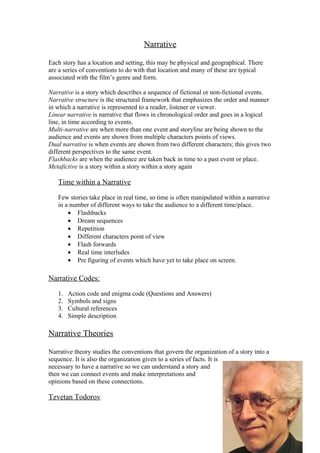The document discusses various narrative structures and theories. It describes linear and non-linear narratives, such as dual narratives that show two perspectives, and flashbacks that take the audience back in time. Theories discussed include Tzvetan Todorov's theory of narrative structure involving equilibrium, disruption, recognition, repair, and reinstatement of equilibrium. Vladimir Propp analyzed Russian folk tales and identified 31 narrative functions and 7 character types. Claude Levi-Strauss viewed narrative as creating binary oppositions that further the story through conceptual conflicts like love/hate.


